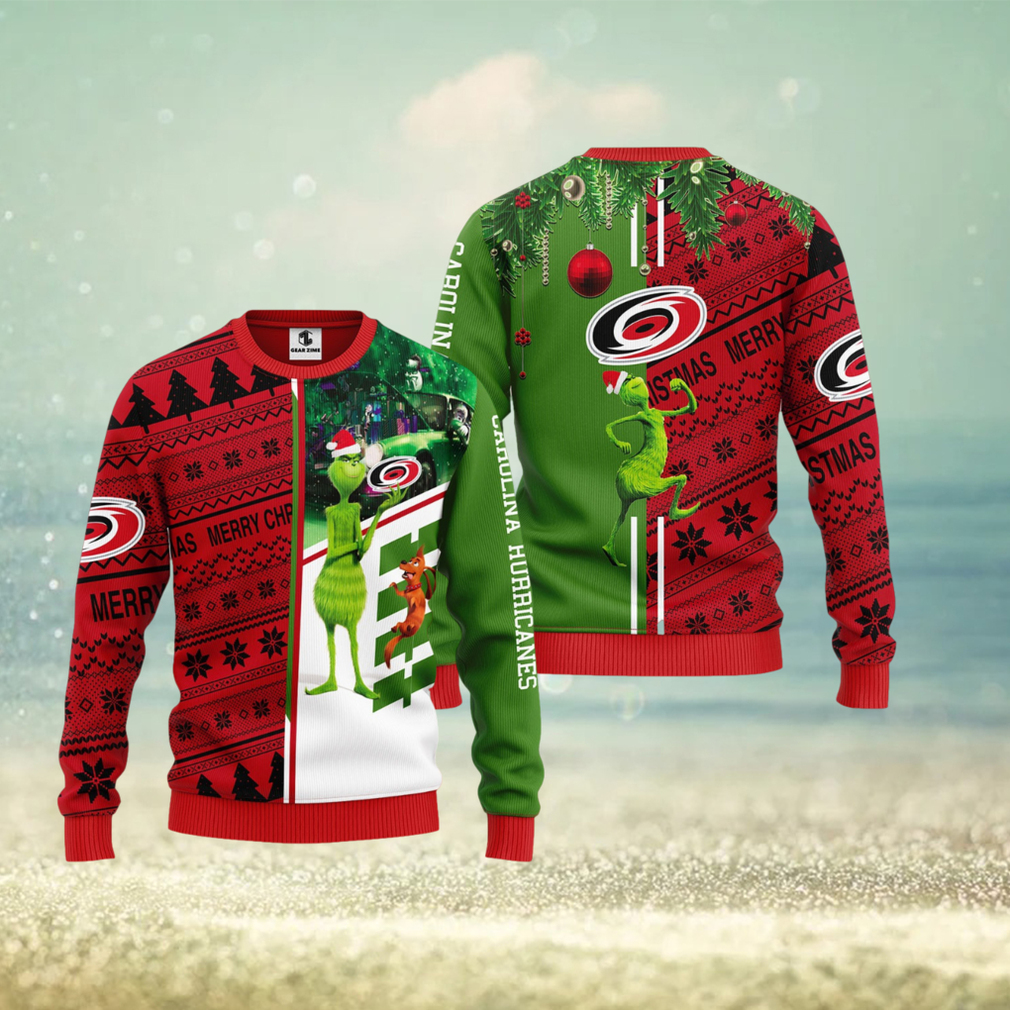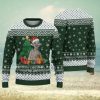Carolina Hurricanes Grinch & Scooby doo Christmas Ugly Sweater
Rugby is a lot more fluid. There is a squad of around 50 in a fully pro club, but only 23 in a match day squad. About 30 players at a club are regular performers in the “first team” squad, whilst the other 20 are developing players or reserves who step in as injury cover. The second tier of English Rugby Union is a mixture of professional and semi-professional players, the 3rd tier is mainly semi-pro. Younger players from the first tier sides are routinely sent out on loan to second and third tier clubs to gain experience. This can work the other way as well — recently an injury crisis in a specialised position (tighthead prop) at my local top flight side led to a semi-pro player who works as a Carolina Hurricanes Grinch & Scooby doo Christmas Ugly Sweater from a 3rd tier club being borrowed on loan. One minute he’s teaching kids, the next he’s running out infront of 15,000 supporters alongside international players being paid over $500,000 a year.
 ()
()Carolina Hurricanes Grinch & Scooby doo Christmas Ugly Sweater,
Best Carolina Hurricanes Grinch & Scooby doo Christmas Ugly Sweater
The easiest conversion would probably be to turn an offense or special teams player from a Carolina Hurricanes Grinch & Scooby doo Christmas Ugly Sweater outside the line who runs with the ball into a non-kicking winger. Wingers are generally the fastest players in Rugby, they are usually positioned at the outside edge of the field, touch the ball least, but often have the most chance to make yards. NFL has some very good footwork coaching which would pay dividends there. English professional Rugby Union winger Christian Wade worked with an NFL footwork coach whilst still playing rugby and is now signed to the Atlanta Falcons in the NFL, he is expected to be used as a running back on the punt return special team if he makes it through to the match day squad.
 ()
()But with the spending you will increase the production of Carolina Hurricanes Grinch & Scooby doo Christmas Ugly Sweater. Either way, in the macroeconomy, “Spending” is what leads to wealth production, “not spending” reduces wealth production and does nothing to increase money saved. That money saved will exist whether used for spending or not. So on either front, if the goal is to increase savings, and increase the net production of wealth, “not spending” is the wrong advice. “Not spending” will not increase the savings that is the preservation of investment, and it will likely not increase the net production of wealth, in fact it is more likely to decrease both. In the macro economy, “not spending” is more likely to have negative effect on the production of wealth and standard of living, than a positive one.
CUSTOMER REVIEWS & FEEDBACK
This Flowers having a Weird Mom builds character Xmas Day T-shirt, hoodie, sweater, tank top, long sleeve, and V-neck t-shirt is a made-to-order product, It is designed by Limotees LLC. This is a limited edition product was made in the USA.
Brand: Limotees Clothing LLC, Inc. - An online fashion company in the USA
At Limotees LLC, we have provided quality T-shirts that are sure to make you feel comfortable and cool even in the scorching heat or cold weather. We also seek to provide our customers with the highest level of customer service possible by adhering to customer satisfaction policies and an open communication style. T-SHIRT FEATURES: - High quality 100% Soft cotton (fiber content may vary for different colors) UNISEX shirt. HOODIE and SWEATSHIRTS FEATURES: - 50% Cotton; 50% Polyester (fibre content may vary for different colors) - IMPORTANT: Runs true to size. Are buyers responsibility to consult the size chart before placing the order. - The design is printed on the t-shirt with a digital printer. - If you want to CUSTOMIZE more this product, please send me a message. CARE: - Machine wash, with cold water, and inside out - Tumble dry on low or hang to dry - DO not iron directly on the design ♥ HOW TO ORDER T-SHIRT, HOODIE, SWEATSHIRT , LONGSLEEVE




